Dota 2 - from amateur fun to professional eSports
When we talk about modern eSports, we immediately think of three main games - Counter Strike, Starcraft 2 and Dota 2. And the last one can be played not only as a professional eSportsman on numerous tournaments with million prize funds, but also just for fun - Dota 2 is available for free and thousands of people from all over the world (they are also called "doters") disappear in it every day. Today in our review we tell more about the secret of success of this game and the secrets of how to win in Dota 2.
About the history of the game
But first, by tradition, let's remember where it all began. Originally it was a modification map for Warcraft III: Reign of Chaos and Warcraft III: The Frozen Throne. It was originally developed by the players themselves back in 2003, and they took the Aeon of Strife map for another real-time strategy game - StarCraft.
The feature of this map was its own unique rules, close to the role-playing games, not to the real-time strategy - there is nothing to build and produce troops, and you need to manage your character to fight with other players, earn experience, level up, buy new equipment to eventually destroy the enemy camp. Players were also attracted by the fact that the map and rules could be freely enough changed, something new could be added, and so on.
The feature of this map was its own unique rules, close to the role-playing games, not to the real-time strategy - there is nothing to build and produce troops, and you need to manage your character to fight with other players, earn experience, level up, buy new equipment to eventually destroy the enemy camp. Players were also attracted by the fact that the map and rules could be freely enough changed, something new could be added, and so on.

A particularly popular version of DotA All Stars was included in the list of official disciplines at various eSports tournaments. In 2009, Valve officially hired one of the developers of the original modification - as it turned out later, to create a full-fledged sequel to Dota 2. The game was released in 2013 and immediately began to gain popularity, gradually replacing DotA All Stars in the list of major eSports disciplines - today more than a million viewers watch video broadcasts of tournaments simultaneously.
Blizzard, the company that developed StarCraft, Warcraft III: Reign of Chaos and Warcraft III: The Frozen Throne, tried to challenge the success of the project, but in the end it played. And it only benefited - Valve was able to focus on the development and bringing to mind Dota 2, and Blizzard engaged in its own similar game - Heroes of the Storm.
Blizzard, the company that developed StarCraft, Warcraft III: Reign of Chaos and Warcraft III: The Frozen Throne, tried to challenge the success of the project, but in the end it played. And it only benefited - Valve was able to focus on the development and bringing to mind Dota 2, and Blizzard engaged in its own similar game - Heroes of the Storm.
About the basics of gameplay
So what is the secret of Dota 2's success? Well, first of all, it's the clear general rules of the game. Participants here are divided into two teams for Light and Darkness, five heroes each, and start storming the enemy camp, trying to destroy first the towers guarding it (those automatically attack those who are in the kill zone), then the barracks swordsmen and archers and finally the main enemy Throne (second name - Ancient), which is the center of enemy defense.
Three lines (upper, middle and lower) lead to the center of the enemy base, on which the towers of one of the four rows are located. As long as you have not knocked down the previous row of towers, the next one remains invulnerable. Just like the Ancient One is invulnerable until you destroy the structures guarding it.
Three lines (upper, middle and lower) lead to the center of the enemy base, on which the towers of one of the four rows are located. As long as you have not knocked down the previous row of towers, the next one remains invulnerable. Just like the Ancient One is invulnerable until you destroy the structures guarding it.
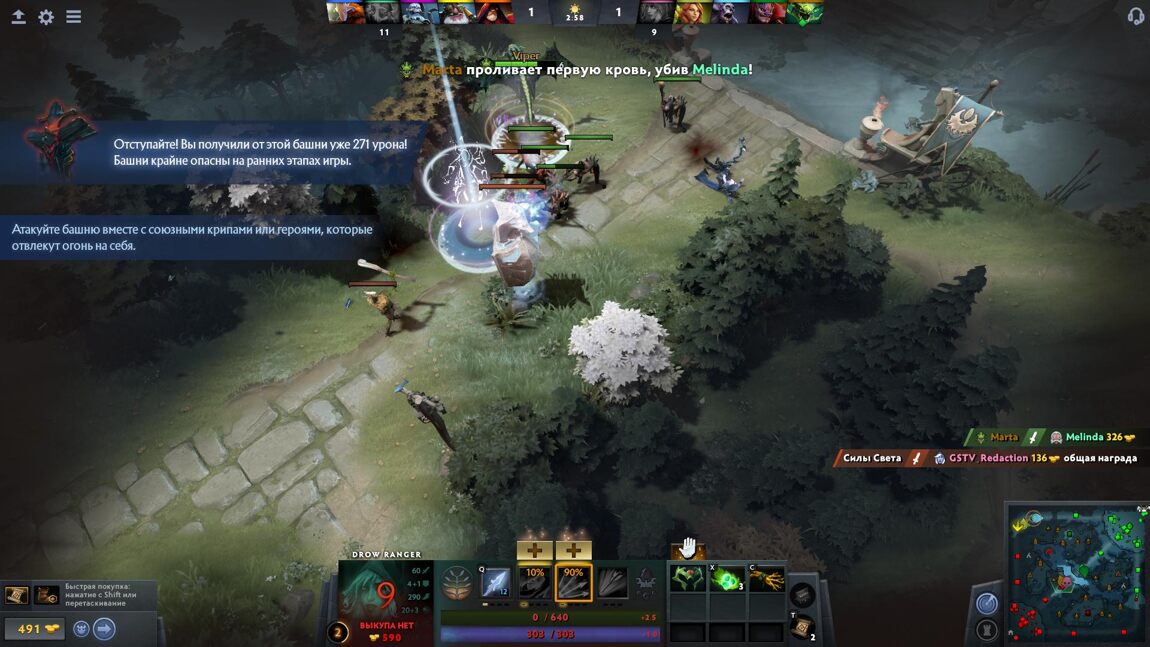
Not only player heroes run along these lines at regular intervals, but also computer-controlled fighters - called "creeps" here. They automatically attack enemy buildings, and players can support them and level up on the destruction of enemy creeps - this is the fastest way to develop your character and earn money to buy in the shops of the new equipment and consumables that restore health or mana (used to use the ability), allow you to become invisible for a while and so on. Interestingly, the destruction of enemy barracks increases the strength of your creeps, among which appear super fighters - it becomes more difficult for enemy heroes to kill them and thus evolve (in the game lingo is called "farming").
There are also more powerful neutral opponents, who belong neither to Light nor Darkness, do not run anywhere, and, as a rule, protect especially valuable items. Among them Roshan stands out - this monster can be killed only by several players, but as a reward they will receive an artifact that allows almost immediately after death to revive with a full supply of health and mana. In normal cases after the death of your hero you have to wait for some time to revive, or pay a large sum of money to return to the battle immediately.
There are also more powerful neutral opponents, who belong neither to Light nor Darkness, do not run anywhere, and, as a rule, protect especially valuable items. Among them Roshan stands out - this monster can be killed only by several players, but as a reward they will receive an artifact that allows almost immediately after death to revive with a full supply of health and mana. In normal cases after the death of your hero you have to wait for some time to revive, or pay a large sum of money to return to the battle immediately.
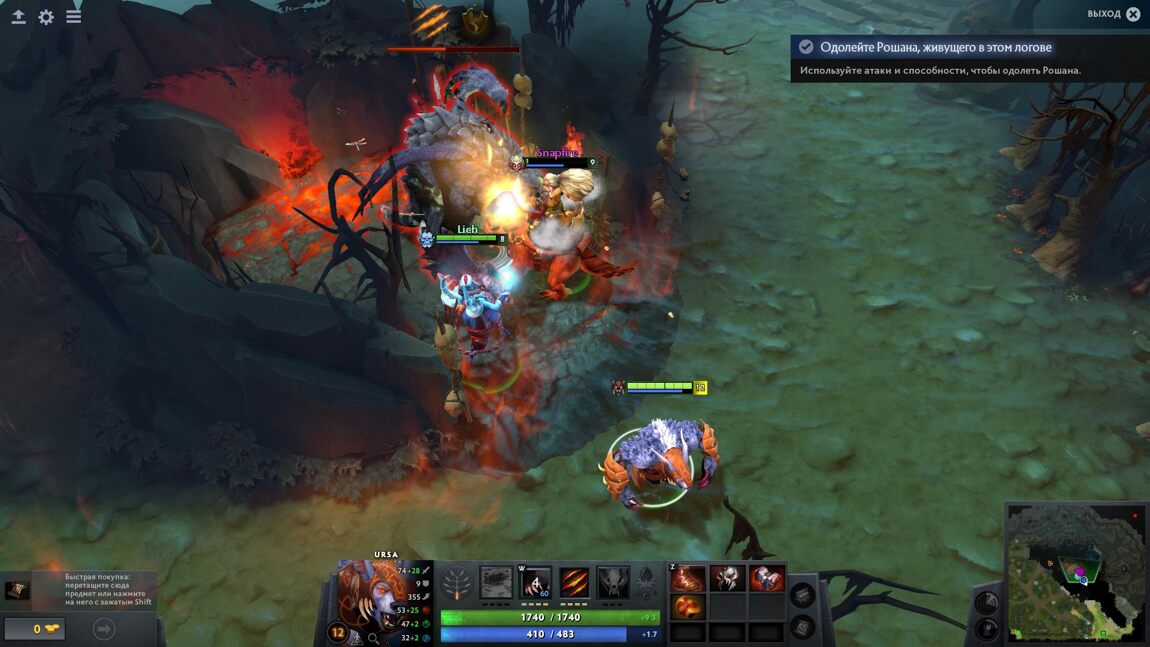
About training and the store
It is clear that in these rules there are a lot of nuances and flexible tactical strategies that you need to know (we will talk about this later), but in this case the game has a convenient training system. For example, there is an option to find a trainer among other gamers, that will prompt you and explain you something with special in-game tools, receiving rewards for this. Learn and learn the basics can be viewing replays matches - this system in Dota 2 has been improved in comparison with the Defense of the Ancients. And assemblies of heroes, created by a community of players, step by step tells, what artifacts need to buy and what abilities in what order to learn. Finally, the main menu is always available a few dozen videos and scenarios, which clearly explain all the subtleties and nuances of the game mechanics. Plus there is a separate detailed tutorial, created by the community.

And for a certain number of training scenarios given as a reward and special shards Dota plus, and sets of equipment for certain heroes, and items to customize the appearance.
Speaking of rewards. Dota 2 is based on the "pay-as-you-go" scheme, where you earn combat points and special Dota plus shards for all your achievements, as well as for completing the tasks / tests ("play 5 games", "kill 7 times Roshan", "win 10 games", deal as much as that damage and so on). And those go to buy new equipment sets for the heroes and items to change the appearance. But at the same time there is an opportunity to buy combat passes for living money - this gives more tasks and opportunities, allows you to earn even more rewards, combat points and equipment sets.
Speaking of rewards. Dota 2 is based on the "pay-as-you-go" scheme, where you earn combat points and special Dota plus shards for all your achievements, as well as for completing the tasks / tests ("play 5 games", "kill 7 times Roshan", "win 10 games", deal as much as that damage and so on). And those go to buy new equipment sets for the heroes and items to change the appearance. But at the same time there is an opportunity to buy combat passes for living money - this gives more tasks and opportunities, allows you to earn even more rewards, combat points and equipment sets.

And, in addition, it opens up access to new characters and special events. For example, with the latest combat pass, the Dragon Knight hero, capable of transforming into a fire-breathing lizard, became available in the game, as well as a special mode "Enemy" - in which the heroes can become stronger if they collect meteorites that periodically fall on the map.
And this is also one of the pluses of Dota 2 - the game is free, available to all. At the same time there is an opportunity to invest your money in additional features if you want, but still determining for success is a personal skill of the player, not how much money he spent.
And this is also one of the pluses of Dota 2 - the game is free, available to all. At the same time there is an opportunity to invest your money in additional features if you want, but still determining for success is a personal skill of the player, not how much money he spent.
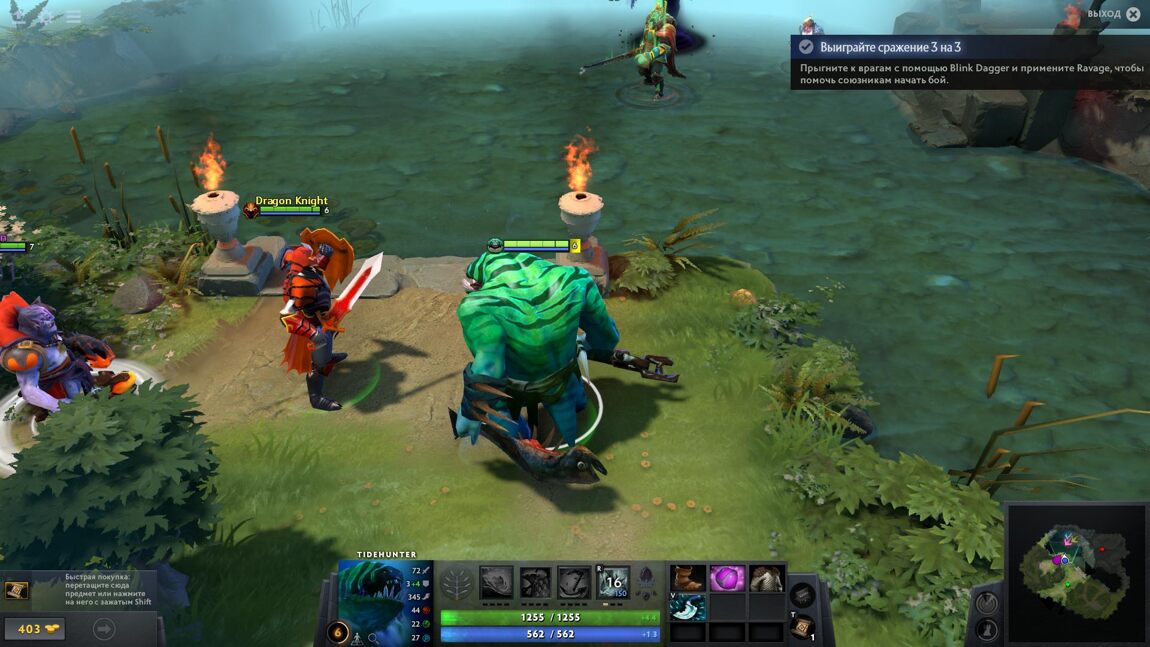
About beauty and integration with Steam
Another obvious argument in favor of Dota 2 is its appearance, the way it looks and sounds, namely at the level of a real hit. The fact that the project was taken over by Valve, allowed to release the game on a super modern at the time graphics engine. And now, after a series of updates to the graphics it looks great - here and juicy effects, and pleasing to the eye cartoon style. Many characters are expressively voiced, including in Russian (and in general the game is fully translated and voiced in the great and mighty), and the clips and cinematic scenes may well compare in quality with the best works in the industry.
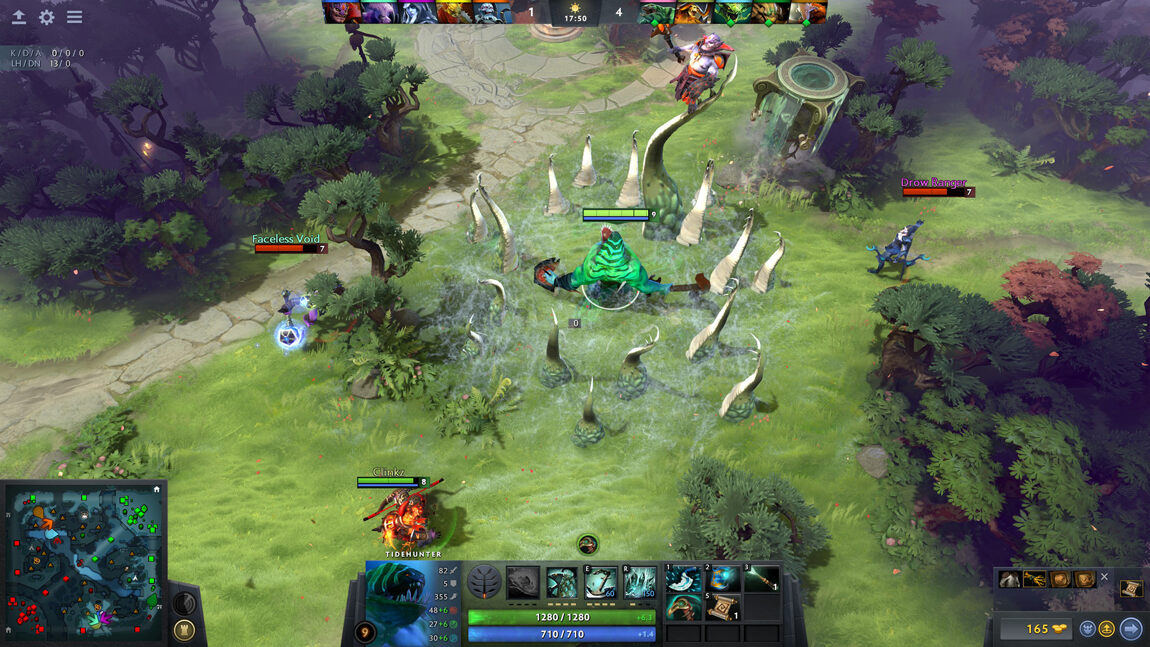
Finally, the most important part of the success was full interaction with Steam, the brainchild of the same Valve corporation. This allows to connect with fans and their community, synchronize personal data from cloud storage, arrange local competitions and even view games live - some of them sell virtual tickets, which allows you to contribute part of the funds to the organizers of the competition. In general, Dota 2, supported by Valve, is different elaborated and stable system of matchmaking - that is the selection of matches according to the rating and level of players that allows you to create approximately equal and fair for all conditions.
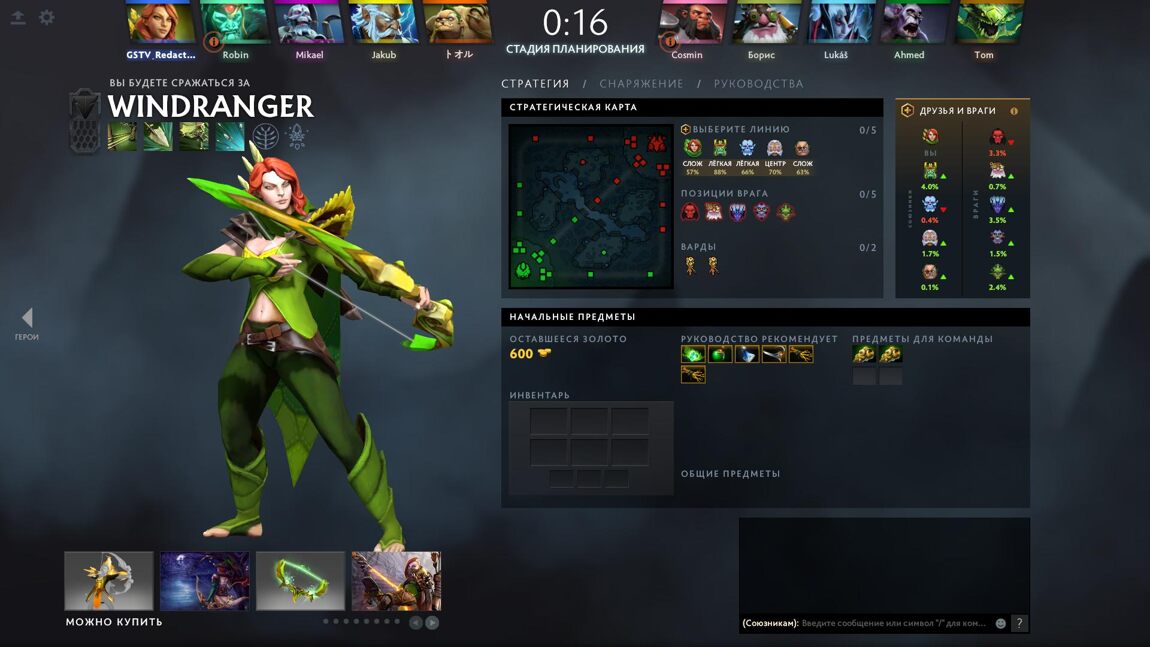
About heroes and their abilities
But the main value and the reason for the success of Dota 2 is its heroes, their multiplicity and uniqueness. Today there are more than 120 heroes in the game. All of them differ in their characteristics, abilities and roles on the battlefield. Some of them are easier to play for, and some are so complicated that even not all pros know how to use them correctly and unlock their full potential. This opens up a wealth of game options and tactics depending on the characters used.
First of all, all heroes are distinguished by their dependence on their main characteristic. This can be strength, which is responsible for survivability and recovery from damage. Among the popular heroes of this group are Huscar, Pudge, Sven and Mars. All have their own advantages and disadvantages. For example, Huscar has high damage and attack speed, he's quite flexible because he can defend well on any line, and he's good at gaining new levels. However, he has low base damage and weak stats at the beginning of the match.
First of all, all heroes are distinguished by their dependence on their main characteristic. This can be strength, which is responsible for survivability and recovery from damage. Among the popular heroes of this group are Huscar, Pudge, Sven and Mars. All have their own advantages and disadvantages. For example, Huscar has high damage and attack speed, he's quite flexible because he can defend well on any line, and he's good at gaining new levels. However, he has low base damage and weak stats at the beginning of the match.
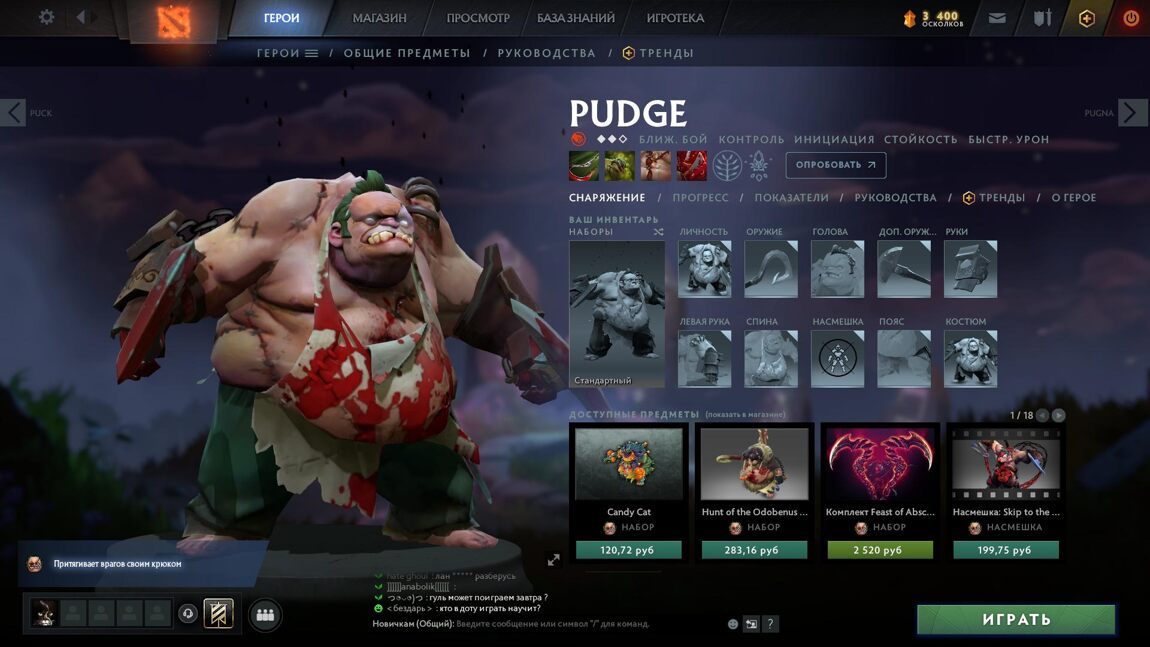
Each hero has three basic abilities, as well as a particularly powerful fourth (the so-called ultimative or "ulta"). Now, Huskar's abilities are tied to his health. He can heal himself and sets his spears on fire to deal periodic fire damage to enemies, but he sacrifices some of his health in the process. His ulta allows him to jump on enemies and do a lot of damage, but in return you have to lose life points again. And the passive ability makes Huskar stronger exactly when he has little health left. That is, this example alone shows how well Dota 2 has balanced heroes in terms of strengths and weaknesses.
In addition to the strongman, there are characters whose main characteristic is dexterity, which allows you to quickly pump up armor and attack speed. Such dexterous heroes are characterized by the fact that they can inflict quite a lot of damage in a short time, which is especially valuable for killing opposing players. In addition, many of them have the ability to stun opponents - this allows for better control of the situation. Some of the popular dodgers are Ursa, Luna, Riki, Phantom Lancer, and Sniper. Or, for example, the Drow Ranger, who with the necessary items and abilities will be able to deal huge damage, pierce several enemies at once and initiate an attack with a chance not to miss, ignore the armor and increase the dexterity of allies who happened to be nearby. However, in close combat this Archer is very vulnerable and lacks the ability to escape in a dangerous situation. But there are ice attacks that slow enemies down.
In addition to the strongman, there are characters whose main characteristic is dexterity, which allows you to quickly pump up armor and attack speed. Such dexterous heroes are characterized by the fact that they can inflict quite a lot of damage in a short time, which is especially valuable for killing opposing players. In addition, many of them have the ability to stun opponents - this allows for better control of the situation. Some of the popular dodgers are Ursa, Luna, Riki, Phantom Lancer, and Sniper. Or, for example, the Drow Ranger, who with the necessary items and abilities will be able to deal huge damage, pierce several enemies at once and initiate an attack with a chance not to miss, ignore the armor and increase the dexterity of allies who happened to be nearby. However, in close combat this Archer is very vulnerable and lacks the ability to escape in a dangerous situation. But there are ice attacks that slow enemies down.
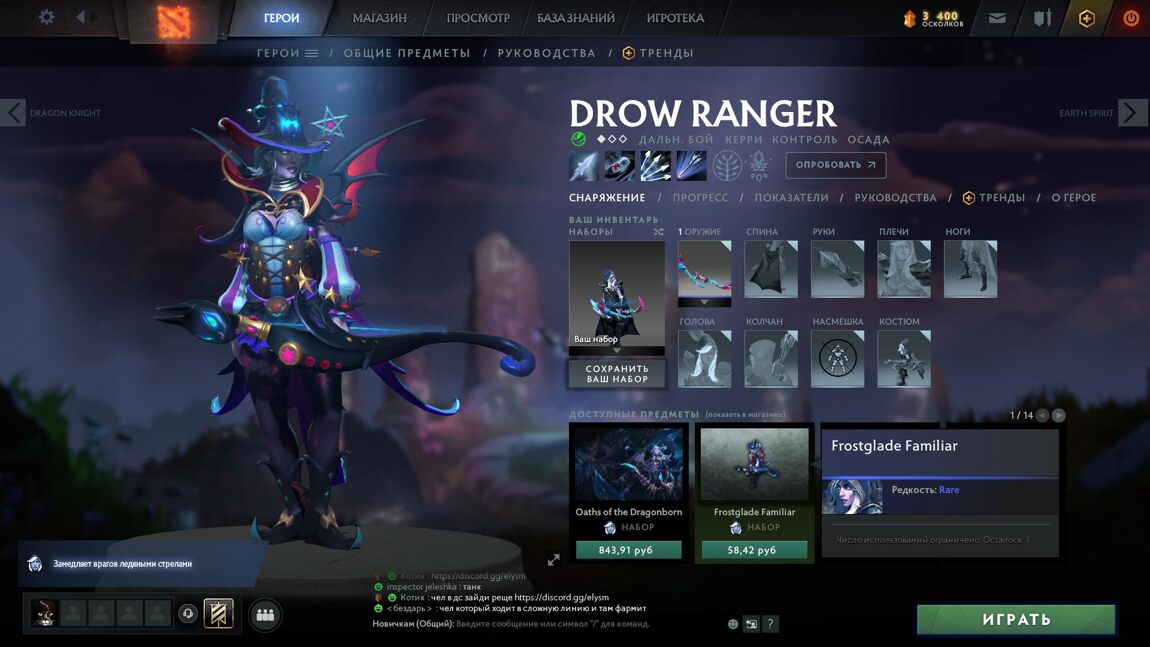
Finally, the third group of heroes depends on intelligence, which affects the amount of mana and its recharge. That is, in fact, magicians, who can greatly influence the outcome of the battle with their spells. Among the popular "intellectuals" are Zeus, Witch Doctor and Windranger. The latter, for example, deals a lot of damage to a single target at high speed (thanks to her ulta!) and is able to stun two enemy heroes at once. But the fact that she usually only hits one enemy is also a disadvantage of Windranger. Another popular mage, Dazzle, can poison opponents and cast a spell on allies that prevents them from dying for a while, even if they are very close to it.
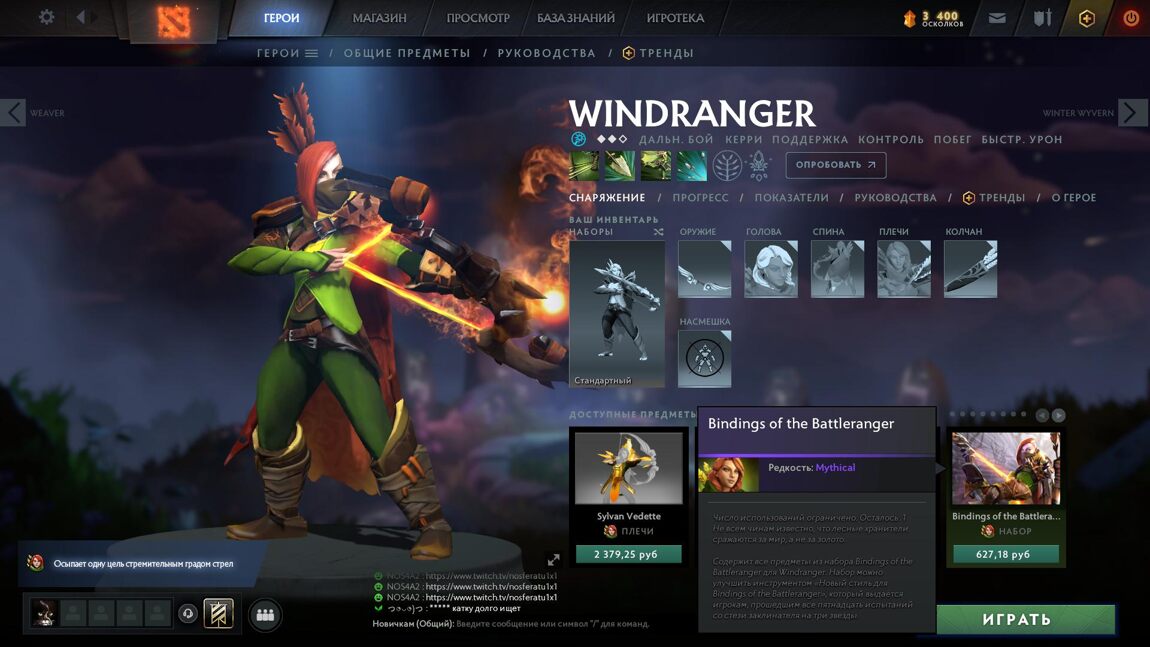
About the main roles of the characters
This is not the end of the character assignment. The most important thing is to know what role a character is best suited for and at what stage of the game his abilities are best used - early, middle or late in the game. And it is also important to know which lines on the map (and let us remind you that there are three of them) the heroes are more effective. Depending on this there is a division into Miders (that is, those who are best suited for playing on the middle line) and Hardliners (more effective on the complex line, where there are the most enemies).
There are several other main roles. They are supposed to be the main asset of the team in the later stages of the game. They are weak at first, but as they level up and buy equipment, they become ultimatums, capable of killing almost any enemy hero in a short amount of time. For example, some famous carriages include Sniper, who has the longest range attack in the game, and Wraith King, who can summon skeletons and even revive after death - so he's good for playing on both easy and hard lines. The aforementioned Wind Archer is also a popular cairn, capable of playing efficiently on both the central and difficult lines.
There are several other main roles. They are supposed to be the main asset of the team in the later stages of the game. They are weak at first, but as they level up and buy equipment, they become ultimatums, capable of killing almost any enemy hero in a short amount of time. For example, some famous carriages include Sniper, who has the longest range attack in the game, and Wraith King, who can summon skeletons and even revive after death - so he's good for playing on both easy and hard lines. The aforementioned Wind Archer is also a popular cairn, capable of playing efficiently on both the central and difficult lines.
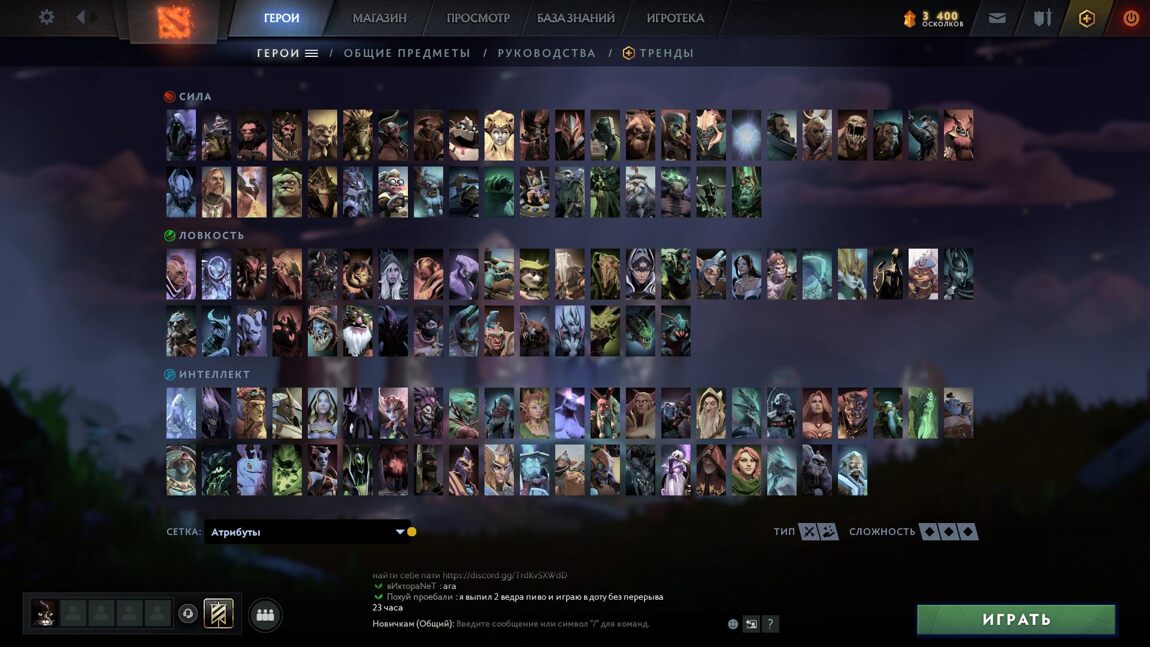
"Kors" or "tanks" are the heroes that can both deal a lot of damage and take the most damage, having quite impressive health reserves. Therefore they have a strong influence on the outcome of team battles. While as a rule there is only one Carry on the team (the strongest hero), there can be several Tanks. These include the already mentioned Huskar and Pudge. The latter has been the most popular hero in Dota 2 for a long time - his skills allow you to stun enemies, pull them closer to your allies, and increase life points by killing enemy heroes.
Also among the more specific roles are initiators (they are designed to be the first to start a teamfight, stunning opponents and allowing allies to engage more easily), disablers (aimed solely at controlling opponents by stunning and slowing them down), foresters (kill neutral creeps in the forest to earn useful items for both themselves and the team), Nukers (deal fast and heavy damage), Escape Heroes (teleport and become invisible) and Siege Heroes (should primarily destroy enemy towers).
Also among the more specific roles are initiators (they are designed to be the first to start a teamfight, stunning opponents and allowing allies to engage more easily), disablers (aimed solely at controlling opponents by stunning and slowing them down), foresters (kill neutral creeps in the forest to earn useful items for both themselves and the team), Nukers (deal fast and heavy damage), Escape Heroes (teleport and become invisible) and Siege Heroes (should primarily destroy enemy towers).

Finally, support fighters (called "soppers") play a crucial role - they are supposed to support their allies with their skills and spells, heal and strengthen them, distract enemies, establish an overview and create conditions for teammates to escape from their pursuing enemies. A prime example is Dazzle, who can actually keep allies from dying for a while. Another popular sapport is Ancient Apparition, which among other things can significantly (up to 30% of the base value) reduce the magic resistance, which allows fellow mages to quickly destroy the enemy. That is, here it is also important to consider the combination of characters. In this case, it is better to use the apparatus in conjunction with the mages.
The same is important to consider the synergy, that is, the combination between skills and items. For example, if a character has an ability that increases attack speed for some time, then it is more logical for him to buy and take equipment that also increases attack speed / damage - in the end, together with the skill, this will turn such a character into a death machine.
The same is important to consider the synergy, that is, the combination between skills and items. For example, if a character has an ability that increases attack speed for some time, then it is more logical for him to buy and take equipment that also increases attack speed / damage - in the end, together with the skill, this will turn such a character into a death machine.

It's true that almost every scrap can have its own trick. In the sense that against the powerful abilities of this or that character there are always those who can successfully counter them (called "counterpick" in Doter jargon). For example, against the already mentioned Dazzle's skill "cross", which distances the death of allies, the counterpick of the Axe character works perfectly, which simply interrupts it. And the Wind Archer can counterpick mages and melee fighters thanks to her Gust skill - she repels them and puts a ban on spells. You can also remember the abilities that return damage back to the attackers. They are great against those heroes that deal a lot of damage, but don't have a lot of health themselves.

How do beginners play?
When playing Dota 2 it's important to know a lot of nuances - for example, how to use teleportation scrolls and consumables, how to use couriers, which can deliver ordered in shops equipment, how to use things that timely impose invisibility or stun enemies before they have time to protect themselves from magic. It's also important to know when, where and what runes appear on the map - they can seriously affect the course of the match because they give powerful boosts: for example, increase damage by 2 times, greatly reduce mana consumption and accelerate its recharge, give a chance to become invisible for up to 45 seconds, allow to move at maximum speed, within 30 seconds restore 6% of health and magical energy and so on.
You also need to know which lines on the map are considered easy / difficult for the Light team, and which, on the contrary, are so for the Dark team. This is important for sending the appropriate heroes there, who are more effective on a difficult line, for example. There are also advanced tactics related to computer-controlled bots (i.e. creeps) - so, they can be distracted by neutral enemies, so that our creeps change their direction of movement and end up where the enemies don't expect them.
You also need to know which lines on the map are considered easy / difficult for the Light team, and which, on the contrary, are so for the Dark team. This is important for sending the appropriate heroes there, who are more effective on a difficult line, for example. There are also advanced tactics related to computer-controlled bots (i.e. creeps) - so, they can be distracted by neutral enemies, so that our creeps change their direction of movement and end up where the enemies don't expect them.

But all these and other advanced knowledge comes with time and experience. And for those new to Dota 2, there are some important universal tips that will help you get the hang of the game. For example, it's better to learn how to play two or three heroes initially, so you won't get bogged down. When choosing your characters before starting the game, it's better to look at who your opponents have chosen and take those that no one else has - or who is most effective against the enemy's team heroes. Directly in the game is better not just to kill creeps, namely finish them - it brings more benefit. If your team has Kerry heroes, it's better to leave the right to finish them off, because Kerrys are the strongest heroes in the game and can turn the tide in your team's favor.
If your tower has little health left, it's better to destroy it, so that the enemies don't get the gold for it. At the very beginning of the match you should place a queue to buy items, and it's better to buy the recommended items for this particular hero, and not to experiment until you yourself have a good grasp of the tactics. In any case, except for some objective reasons, it is better not to leave the game early - it spoils everything for others, and on your reputation, to put it mildly, not in the best way. Well, and, of course, it is important to play in a team, working with the chat, sending the team important messages - for example, which enemy hero left your line. Well, and always keep an eye on the situation on the mini-map.
If your tower has little health left, it's better to destroy it, so that the enemies don't get the gold for it. At the very beginning of the match you should place a queue to buy items, and it's better to buy the recommended items for this particular hero, and not to experiment until you yourself have a good grasp of the tactics. In any case, except for some objective reasons, it is better not to leave the game early - it spoils everything for others, and on your reputation, to put it mildly, not in the best way. Well, and, of course, it is important to play in a team, working with the chat, sending the team important messages - for example, which enemy hero left your line. Well, and always keep an eye on the situation on the mini-map.

It is also useful to know which heroes are easier and easier to play for beginners. Many people (and even Valve itself) consider Sniper, Huskar, Viper, Bounty Hunter, Zeus, Urs, Shadow Shaman. But, for example, with Phantom Assassin and Invoker (Invoker), which has the biggest skill set in the game, only experienced "Doters" can cope. So it's better for newcomers not to touch them until later.
But the main thing - it's to learn, learn and learn. That is, do not hesitate to play a lot with bots and with the same beginners in a light mode, watch games and replays, look for coaches, read the manual. And only after that try your hand at serious rating matches.
But the main thing - it's to learn, learn and learn. That is, do not hesitate to play a lot with bots and with the same beginners in a light mode, watch games and replays, look for coaches, read the manual. And only after that try your hand at serious rating matches.

Conclusion
Yes, Dota 2 is not an easy game. You have to try hard to succeed here. But at the same time it's a rather accessible game - because it's free, because it's beautiful, because it doesn't require a very sophisticated computer and because its general rules are quite clear to everyone: you fight in one team to destroy the other team's camp. It's this combination that has ensured Dota 2's success over the years.
22 August 2021